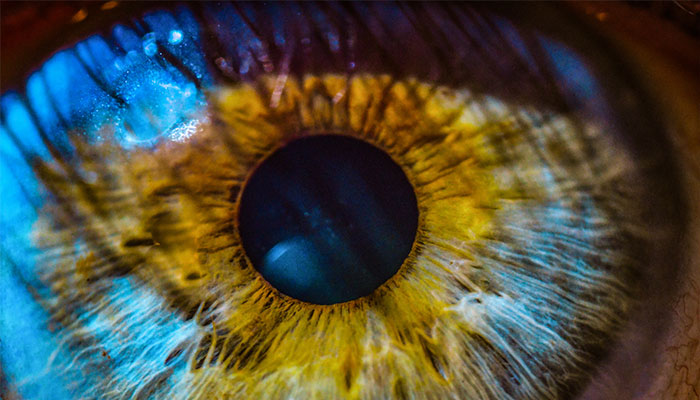MND is a poorly understood disease. There is no diagnostic test. Clinical management is restricted to treating the symptoms of the disease and managing its progression. The sole drug approved in Australia for its treatment extends the lives of patients by an average of two months.

Perpetual motion: zebrafish in the Centre for MND Research laboratories.
It is a grim picture, but researchers at Macquarie University’s Centre for Motor Neuron Disease Research are tackling the disease on multiple fronts. From patient treatment to genetic and cellular research to laboratory testing in zebrafish, the centre and its more than 70 researchers hope one day to vastly improve the prognosis for sufferers.
“Our work stems from a desire to understand the fundamental biology underlying MND and to use that to develop new treatments and strategies for clinical management of the disease,” says centre director Professor Ian Blair.
“In terms of our genetic studies we’re one of the key teams worldwide. Those studies allow us to pinpoint the genes and the proteins that are abnormal [in sufferers] and those genes and proteins have become our targets for diagnosis and also for potential therapies.”
Finding the genes that cause MND
MND is a neurodegenerative condition that causes paralysis by killing motor neurons, the cells that control voluntary muscle activity such as speaking, walking, breathing, and swallowing. The average life expectancy after diagnosis is three to five years. Ten per cent of cases are inherited; the rest are sporadic, with genetic and as yet unknown environmental factors thought to have a roughly equal role in those cases, Blair says.
“Of the 10 per cent that we find the [inherited] genes in, those genes point to the biochemical abnormalities in the body and when we go and look at those patients who are sporadic, almost in every case they have the same biochemical abnormalities,” Blair says. “The genes give you the tool to understand the disease as a whole so genetics is a critical step.The gene is the ‘what’ – as in, what genes cause the disease - and the lab research and the animal models determine the ‘how’ ”.
To understand the biology behind the disease, the Macquarie researchers introduce gene defects identified in MND into zebrafish, a tiny, fast-growing Himalayan native that is transparent when young. They then study, with the help of a fluorescent dye injected into the fish’s nervous systems, how the fish develop the features of motor nerve degeneration.
“A fish is ideal - if we’re talking about paralysis, we need to observe movement, and a fish is perpetual motion,” Blair says.

Professor Ian Blair is optimistic a cure for MND may one day be found.
A major breakthrough in understanding how MND might move from neuron to neuron came in 2017, when a research team led by postdoctoral fellow in biomedical sciences Marco Morsch discovered a UV laser “ablation” technique capable of killing an individual, unhealthy cell in a zebrafish, without harming neighbouring cells.
Once researchers understand how the disease progresses, for instance through a particular biochemical pathway that’s causing motor neurons to die, says Blair, they can then intervene in that pathway and try and prevent or slow the death of the neurons.
Early diagnosis crucial for drugs to work
Another strategy planned by the centre is to test all sorts of drug compounds on fish with features of MND, to see which might slow or halt the disease.
“Many, many thousands of drug compounds are out there that have never been tested in certain settings and we don’t know what they do,” Blair says. “There are also compounds that have been used for other purposes, or never been adopted for any disease, and we can try them on the fish one by one.”
Before drug trials in humans can be truly successful, however, scientists must develop a diagnostic test to identify MND early, which is a key priority for the centre, says Blair. At present, it takes up to a year for doctors to confirm MND, by which time it may have progressed too far for trial drugs to make a difference.
Another critical precursor for successful trials is to develop biomarkers that monitor the condition’s progression. Because MND develops at different rates in different people – some people live for more than 10 years after diagnosis; Stephen Hawking, “an exception to the exception” as Blair puts it, lived for more than 50 – it is difficult to assess without those biomarkers what impact drugs are having.
“There have been a lot of clinical trials in MND, most have failed,” says Blair. “Diagnosing early is absolutely critical, not just to get clinical management, but to get patients into trials early enough.”
‘An explosion in the amount of research’
A researcher in the field for more than 20 years, Blair says the rate of discovery of genes implicated in MND is good reason for hope; the first gene was discovered in 1993, and it took 13 years to discover the second gene, but since 2006 “we’ve added another 20 genes, that’s how rapidly things have progressed”.
“Instead of just one gene and limited opportunities to study MND, we now have 20 or more genes and that many more tools to investigate the disease, so we’ve seen an explosion in the amount of research,” he says.
“I would never have envisaged it would have accelerated that fast, so if things keep accelerating, perhaps a cure is feasible – or at least a treatment that can slow or arrest the progression.”



